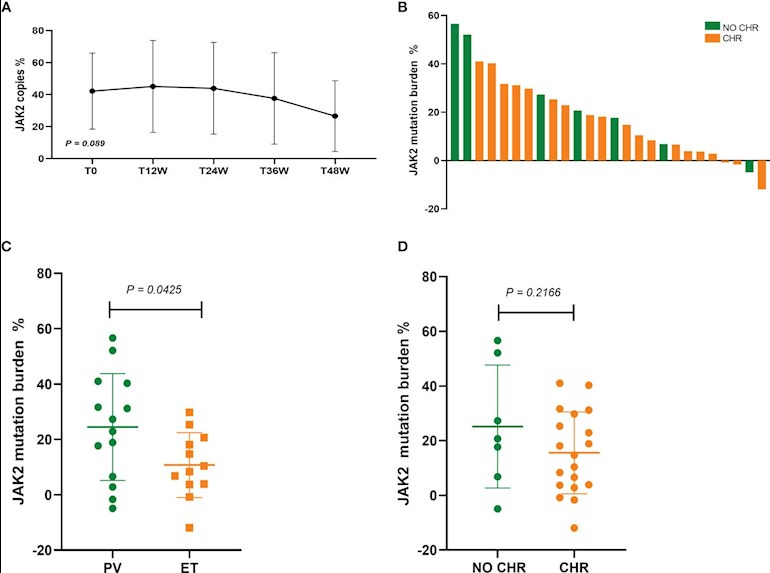Came across this one. frontiersin.org/articles/10...
It used "Peg-IFN-a-2b; PegBeron, Y shape, 40 kDa, Xiamen Amoytop Biotech, China" a type of Peg not familiar to most of us.
This is an alpha 2b type INF as is Besremi, (Pegasys is -2a)
It worked ok for blood counts, HR, but it's way less effective in MR than either Besremi or PEG if I read it right.
See chart here, upper left plot. MR is basically flat. Upper right, most got worse if I read it correctly. The familiar plot for Ropeg is very different, with dramatic reductions by year 2.
This suggests that INFs are not all equivalent for MPN at least regarding MR, and the differences could be real.
